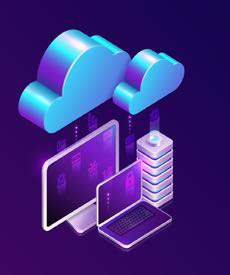Special Report: Unlocking Rapid and Low-Risk Cloud and SAP Migrations
What does this modern way of systems integration mean for businesses?
Introduction
Companies today must move at the speed of modern business. They need the ability to quickly scale operations and react to meet evolving market conditions and changing customer preferences and expectations. The challenge is that the inflexibility of legacy systems and monolithic applications make it hard to create new applications based on their data and services. And those outdated monolithic applications and systems do not lend themselves to the quick changes, updates, and enhancements needed to compete in today’s fast moving business environment.
Additionally, businesses are beginning to realize how difficult it is to work with multiple systems at one time. To make things easier on staff and benefit the company overall, businesses are looking to data integration platforms to help streamline processes, reduce costs, and ensure efficiency. Globally, the market for integration systems is on the rise and is expected to grow 11.7% by 2025.

As such, the path to modernization is to move to the cloud. Specifically, they need cloud-based systems that integrate disparate systems and provide easy access data, allowing new applications and innovation to abound. This, in turn, allows for the creation of new products and services to emerge with low risk and reduced cost, boosting revenue with the same size teams.
Migrating to the cloud allows businesses to reap all of the benefits that the traditional cloud platform has to offer. There are no upfront CapEx costs, operations can move to an OpEx model, and the managed aspects of many cloud services relieve IT staff of performing the mundane but necessary chores associated with security, data protection, high-availability, and performance optimization.
Data, and Smart Access to it, is the Oxygen that Keeps Businesses Breathing
Application modernization is critical for businesses in today’s dynamic world. At the heart of most modernization efforts is the adoption of cloud-native architectures based on microservices (such as Kubernetes), and loosely-coupled independent elements.
Such an architecture avoids problems of monolithic applications by allowing fast updates to discrete elements of an app and easier integration of new, upgraded technologies. For example, a retailer can quickly add a customer-demanded feature to a mobile app without having to recode an entire order processing application. The back-end elements of the larger application remain unchanged. Similarly, a financial services company can revise the way it makes instant credit decisions by linking to additional third-party financial datasets that provide an expanded view of the customer’s credit worthiness. Again, in both of these examples, additional data can be incorporated into a decision making process without requiring any changes to other parts of the workflow.
Additionally, many modernization and cloud migration efforts benefit from the use of composable elements, which are standardized modules that perform specific tasks. Composable elements can be reused throughout an organization, saving time and eliminating new investments.
There are many benefits, when making this fundamental shift in the ways that applications are built, deployed, and managed. They include but are not limited to:
- Improved ROI with faster development times and fewer staff hours
- Ability to complement cloud and composable benefits by using low-code development
- Retention of investment in legacy systems while allowing a business to incorporate them into modern apps
- Improved developer lifecycle processes via simplifying complex integration and the maintenance of integrations.
At the heart of such modernization and cloud migration efforts that allow businesses to achieve the benefits listed above is exposing the data and services that have become locked in siloed applications. This is accomplished using APIs. However, for this approach to work, there are enormous integration requirements needed to make all the different moving parts work together cohesively.
Undertaking a System Migration: Overcoming Integration Issues

Integration is fundamental in any cloud migration effort. Enter the Integration Platform as a Service (iPaaS). Gartner defines an iPaaS as a solution that provides capabilities to enable subscribers to implement data, application, API, and process integration projects involving any combination of cloud-resident and on-premises endpoints. An iPaaS is typically used for cloud service integration, application-to-application integration, and business-tobusiness integration.
Like many “as-a-service” solutions, there are iPaaS variants. Businesses moving critical workloads and data, such as SAP ERP systems, need what many call an enterprise iPaaS. Such a solution is designed for enterprise-class integration projects, which require high availability/disaster recovery (HA/DR), security, service-level agreements (SLAs), and technical support from the provider.
How does an iPaaS help with migration and integration? Cloud-based iPaaS solutions make connecting applications and business processes much easier. An iPaaS allows disparate applications or other resources to communicate and share data with each other in a systematic, easy-to-manage way
An iPaaS also helps standardize how applications are added to an organization. Rather than building custom interfaces for every new application, all new applications can share their logic and data via a well-defined method. There is no need to recode or create new interfaces.
Another benefit of an iPaaS is that it makes moving static or transactional data across applications easier. With iPaaS there is a common way to access and share data. The management capabilities of an iPaaS give real control over who, when, where, and how the organization handles data.
Interestingly, iPaaS solutions are boosting the use of composable elements. Composable code has been around since the early days of service-oriented architectures. Then and now, a composable encapsulates a function or process into a self-contained module. The elements allow a business to standardize that process or function and seamlessly share it throughout the organization. For example, a company might develop a module that formalizes getting a supervisor’s approval in a workflow. Such a function is useful in many departments. Rather than each department writing its own code, the encapsulated logic can be shared throughout the business in the form of a composable element. With regard to SAP business functions, common composable modules handle tasks including master data management, procure to pay, order to cash, and record to report.
What prevented more wide scale use of composable elements in the past was the difficulty of integrating them with other applications and data. An iPaaS overcomes that problem.

Coincidentally, the ability to more easily use composable elements, thanks to the capabilities of an iPaaS, comes at a time when companies are embracing low code development technologies. Low code solutions let developers create applications without writing code. Developers use a graphical-based platform that lets them select modules and drag-and-drop them into workflows. This approach creates an environment where integrations are built faster and more efficiently. As such, it frees up highly-skilled programmers to work on more demanding issues. It also extends application development capabilities to junior programmers. So, a business unit can quickly build a needed app or integration without having to wait for the most skilled members of the development team. This creates a more inclusive environment where coding or building integrations are more easily accomplished by people of all skill levels and backgrounds. This approach bridges the gap between IT and Business teams so they are more equipped to collaborate together. Having the ability to build, test, and deploy from a single platform dramatically increases the speed with which integrations and applications are deployed.
Combined, the availability of iPaaS solutions, the growing use of low code, and the interest in composable elements are complementary trends that help accelerate application modernization, provide easier access to siloed data and systems, and improve the process of cloud migration.
A Closer Look at SAP 4/HANA Cloud Migration
Organizations today face major data challenges. There is a lack of scalability, inflexible storage, and static computing power, just to name a few. At the same time, data is multiplying exponentially. Businesses need solutions and they need them fast! Many businesses are overcoming these problems by migrating their SAP data and applications to the cloud.
Migrating lets businesses leverage the inherent scalability of cloud services. Compute and storage capacity can be dynamically throttled up (or down) as demands require. SAP data and applications migrated to the cloud are more easily accessible, thus breaking down data silos. Data virtualization capabilities also eliminate the need to replicate existing data. Instead, a business simply provides any unit that uses the data with access from anywhere.
There are other factors too. Specifically, in the past SAP had allowed customers to choose between on-premises vs. cloud. Now the plan is to move customers to the cloud on a fast timeline. The carrot to migrate is an S/4 HANA data engine that is hosted on remote cloud servers, offering improved connectivity with its own apps and those of its competitors.
How does a business make the migration? Many organizations have a mix of SAP ERP Central Component (ECC) and SAP S/4HANA applications and databases. As businesses execute digital transformation strategies, these systems must be incorporated into new workflows, modernized applications, and cloud infrastructures.
Technologies that successfully carry out migrations will flourish. However, proven methodologies and best practices based on real-world experience are needed for a successful migration. These are areas where Digibee can help. Digibee has developed a unique six-step methodology that takes into account the critical need to keep access and systems running non-stop throughout a migration. By implementing this approach, businesses are able to complete the process of cloud migration with minimal disruption.
To accomplish a minimally disruptive migration, companies need to make the business logic and data of applications on those systems available as reusable services that can be easily and quickly consumed by other applications. This is typically accomplished via APIs.
One of the challenges here, that Digibee has taken into consideration, is that developers might not have all the relevant information about external systems when they start a migration. To avoid delays in such cases, businesses use mock APIs, which offer great flexibility in that a developer can emulate almost any external API. Additionally, mock APIs can be created even when external dependencies are not known.

Once implemented, this six-step process yields a number of significant benefits.
There is lower risk as well. The operating environment offers greater stability. There is no downtime and no cut-off or even a phased cut-off. Plus, businesses benefit from enhanced near real-time monitoring and troubleshooting. The Digibee team prides themselves on being there for their clients needs. From the start, they work hand-in-hand with their customers to give them the knowledge and tools they need to be independently self empowered to run their own integrations as time goes on. However, experts at Digibee are always just a click or phone call away with live customer support to help with general questions and/or troubleshooting.
What are the Impacts?
When a company effectively integrates data, their systems and processes become more efficient and impactful for users and for the business itself. Business processes are more streamlined, and there are fewer disruptions because all data is able to be kept and organized in one place. An integrated approach reduces overhead, training time, and overall costs while boosting productivity and shortening time to market.
Migration also allows businesses to gain a more robust view of their data. An effective integration system allows business units to work from a single, central dataset where they can get a 360-degree view of that data. This more complete view allows businesses to transform captured data into stories that can significantly help improve customer engagement and user experience.

Integration enables real-time operations. Systems and data obviously go hand-in-hand. More systems equate to larger amounts of data which typically equate to longer data transfers from one system to the next. In contrast, an integrated data system eliminates latency and the need for transfers, resulting in faster data updates and more up-to-date information being processed in near real-time.
Most importantly, migration to the cloud helps accelerate opportunities for innovation. While in the past, companies might need to make one or two updates to critical applications a year, businesses today need to react faster to constantly evolving market changes. Modern applications require frequent updates to add new features, support different data sources, and incorporate new technologies ranging from new front-end devices to more sophisticated analytics routines to derive insights for business decisions. Additionally, companies must be able to quickly scale up or down to meet evolving demands.
To summarize, siloed and monolithic applications typically have problems in all these areas. As a result, many businesses are migrating to modern cloud-based development and deployment platforms. The benefits from an integration modernization include, but are not limited to, reduced time to market, increased team autonomy so different groups can work the codebase independently, and dynamic scaling.
Critical to this migration is an iPaaS that helps integrate the necessary elements. Cloud migration is an area where Digibee excels. The Digibee hybrid integration platform uses low code and composable elements (called Digibee capsules) for many SAP functions. The platform drastically reduces the complexity of integration environments and enables businesses to transform their legacy systems 10-times faster than other platforms.
It offers a secure and scalable cloud-native architecture built on Kubernetes, automating DevOps processes, version control, and simplifying infrastructure. It includes API management support to create, secure, manage, and share APIs across environments quickly and easily.
To learn more about how to migrate SAP data and applications to the cloud, visit https://digibee.com/.

